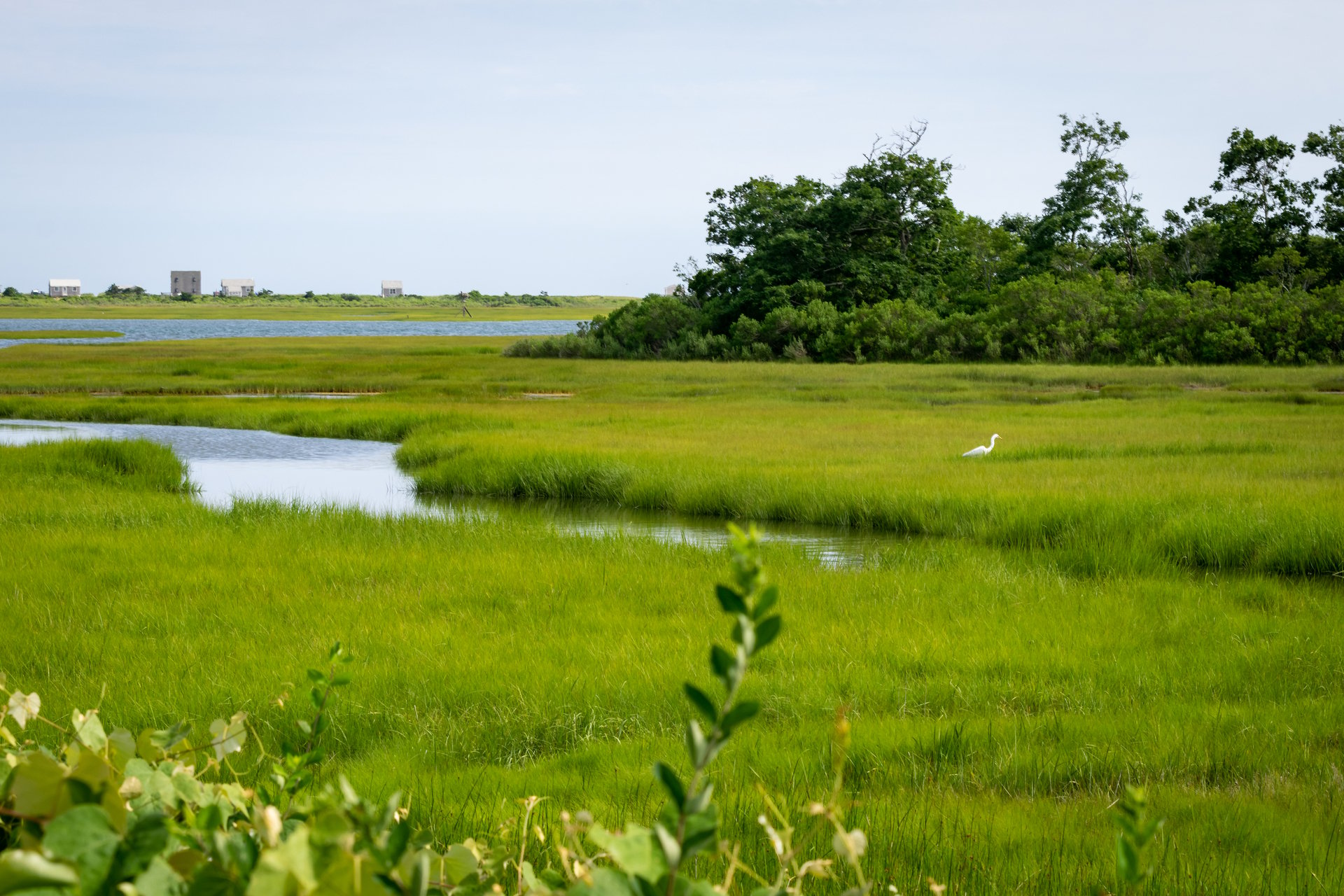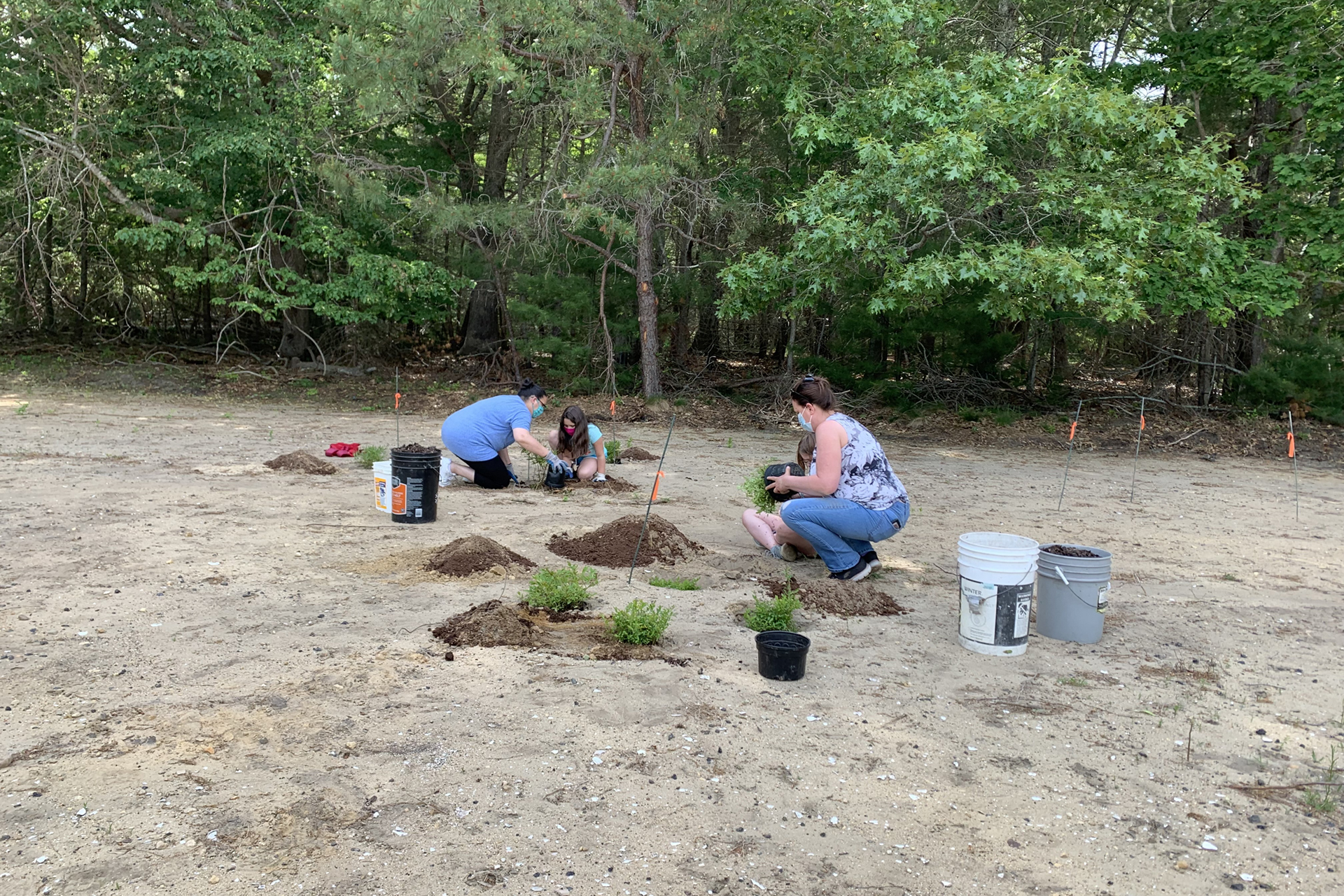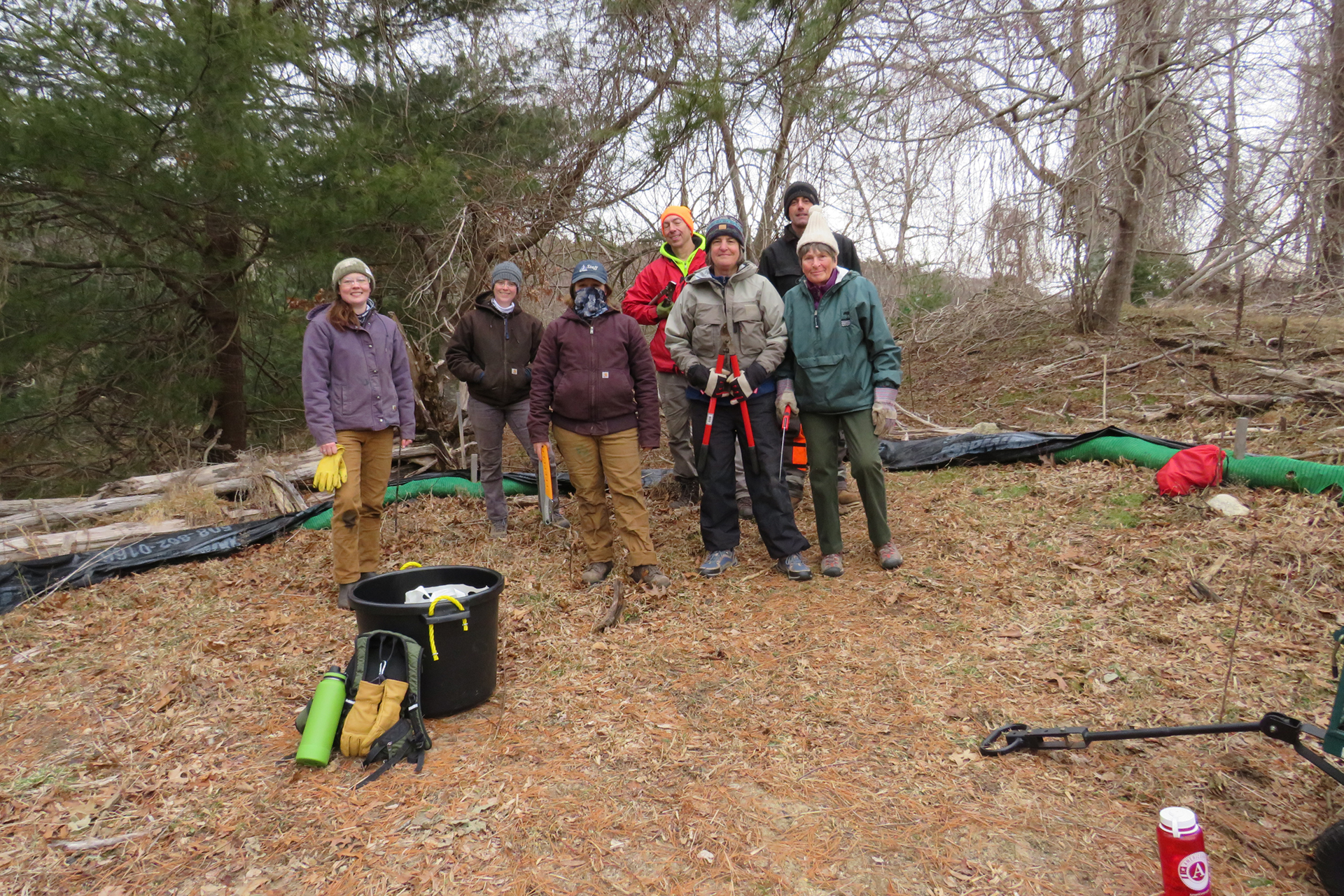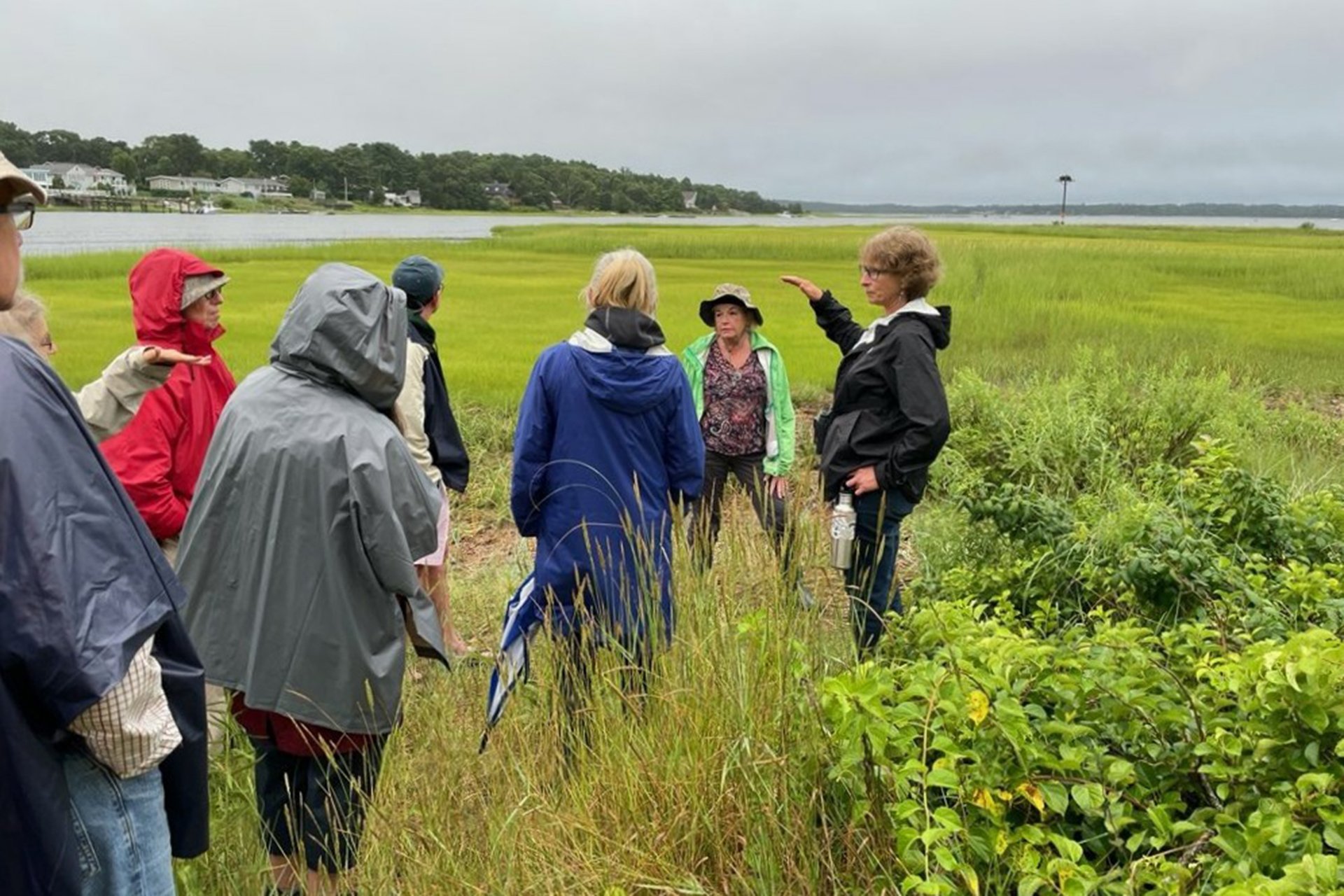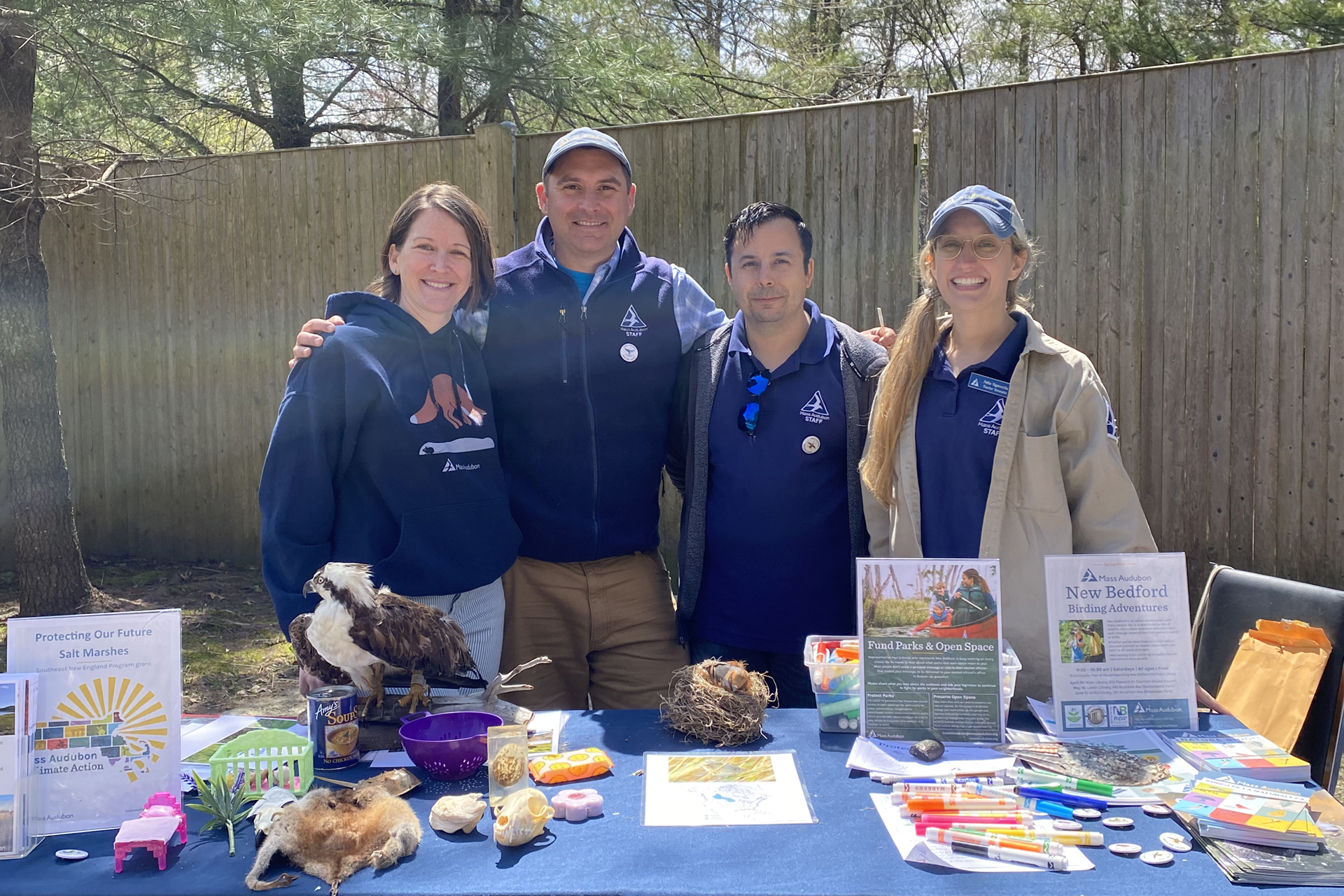You may have noticed ongoing ecological restoration work if you’ve explored the Beach Loop at Allens Pond Wildlife Sanctuary, hiked Chase’s Way at Great Neck Wildlife Sanctuary, or admired Allens Pond from the overlook at Dartmouth Natural Resources Trust’s Ocean View Farm. The South East team has been busy collaborating with our project partners to eliminate coastal barriers hindering salt marsh migration, modifying the hydrology of the salt marsh to prevent vegetation die-off, and engaging with our members and communities.
Why South Coast Salt Marshes Need Our Protection
One of the world’s most productive ecosystems, a salt marsh, provides critical habitat and food for birds such as Osprey and Saltmarsh Sparrow. Salt marshes also absorb storm surge, storm water, and wave and wind energy, protecting our coastal infrastructure and properties from damage. Salt marshes can adapt to changing conditions by migrating inland, but with continued development along the coast, and as climate change causes increased sea level rise, salt marshes have few places to go, leading to tidal flooding.
As extreme weather events increase in frequency, the amount of flooding that our coastal areas experience will increase.
How We’re Protecting Salt Marshes in the South East
To protect the salt marsh at Allens Pond, we are restoring the natural tidal flow of water, known as hydrology. One method to accomplish this is installing small, shallow channels called runnels, that drain excess water from a flooded marsh into nearby creeks and waterways. This alleviates flooding stress and plant die-off and promotes marsh revegetation to minimize future degradation of the marsh.
At Great Neck, we are restoring areas surrounding the salt marsh to help facilitate the salt marsh’s migration inland as sea levels rise. We have removed buildings, and invasive, non-native plant species like Common Reed that obstruct salt marsh migration. We reseeded the cleared areas with native plants to provide habitat for local wildlife such as Diamondback Terrapins, Great Blue Herons, and Monarch butterflies.
Volunteer Events Fuel Progress
It takes a lot of work to care for the land and protect our salt marsh communities against the threats of climate change. Our dedicated volunteers spent over 600 hours working on these important projects. Our volunteers assisted in removing invasive plant species, collecting native seeds, planting native plants, and much more.
Thank you to all our volunteers that have dedicated their time and energy to making a positive difference in our corner of the world. Interested in joining? Find Upcoming Volunteer Opportunities
Inspiring & Educating Our Communities
In order to educate community members about the importance of salt marshes and promote the ongoing restoration work on our sanctuaries, we connected with thousands of individuals through adult, family, and school programs. Program participants were invited on salt marsh walks to learn about threats to salt marshes, the wildlife that rely on them, and experience first-hand these wonderful habitats that need protecting. Program participants observed saltmarsh sparrows and learned about the significance of high marsh habitat to the future of the species. By discussing the vital role of the salt marsh in providing inland storm protection the community members can become better informed and inspired to protect these critical habitats.
Additionally, local middle-schoolers were inspired to plant pollinator plants, sharing knowledge about their importance and the role of native pollinators in an ecosystem. By engaging the next generation in habitat management and restoration, we can promote the stewardship of critical habitats for years to come.
Looking to the Future
We are excited to announce that we will continue this work through the U.S. Environmental Protection Agency’s (EPA) Southern New England Program (SNEP) Stormwater and Natural Infrastructure Grant (SNIG). This will allow Mass Audubon to continue to protect Buzzards Bay Salt marsh from sea level rise. Mass Audubon, in collaboration with partners including Save the Bay, Dartmouth Natural Resource Trust, the National Oceanic and Atmospheric Administration (NOAA), Bristol County Mosquito Control, Ducks Unlimited, Atlantic Coast Joint Venture, and Wareham Land Trust, seeks to safeguard salt marsh through continued implementation and education.
The completion of marsh restoration and inland migration on a total cumulative 200 acres of Buzzards Bay saltmarsh will serve as a significant demonstration site for municipalities and landowners across the Buzzards Bay Watershed region as well as throughout the SNEP Network and other coastal areas in New England. This work will be a partner-driven, collaborative effort to develop conservation plans and implement these strategies for key salt marshes in Southern New England, provide tools to enable additional conservation planning at many more sites, implement pilot projects to conserve salt marshes through such marsh migration facilitation, and provide “demonstration sites” where partners can see and learn about methods to improve salt marsh resiliency.
Stay informed on our progress by visiting the project’s Story Map. We will continue to update it as our work continues.
Thanks to Our Community Partners
None of this would have been possible without our invaluable project partners: Dartmouth Natural Resources Trust (DNRT), Save the Bay, Town of Wareham, Wareham Land Trust, U.S. Fish and Wildlife Services, Town of Dartmouth, and Bristol County Mosquito Control.
Our team has been carrying out this work through the U.S. Environmental Protection Agency’s (EPA) Southern New England Program (SNEP) Watershed Implementation Grant (SWIG), in collaboration with Restore America’s Estuaries (RAE).
Stay Connected with Allens Pond
Don't miss a beat on all the ways you can get outdoors, celebrate nature, and get involved.



